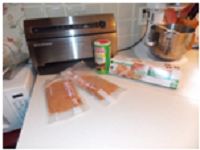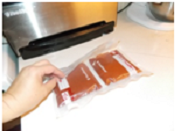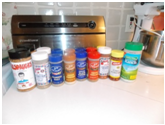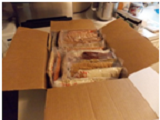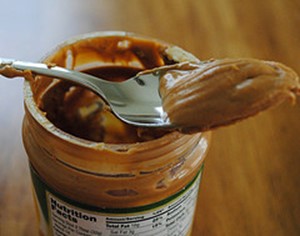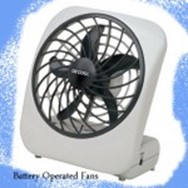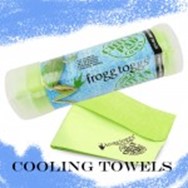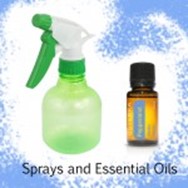Keeping up with the recent theme of exploring common objects and finding preparedness uses for them, this month’s article looks at some prepper uses for plastic sheeting, sometimes called Visqueen. While the uses for plastic sheeting is seemingly endless, we’re going to focus on those that serve us in our preparedness plans.
Plastic sheeting
is a polyethylene film, available in clear and black, and in various thicknesses. It’s available just about anywhere selling hardware, in both black and clear, and in several thicknesses.
Some fabric stores sell plastic sheeting as well, but generally only in the thicker mills. They may have colors and even patterns available, if you want to get fancy, but sell different sizes than discussed here. (The width is narrower since it is on a roll in the upholstery section; the length is whatever you request, as with any fabric.)
Thickness is usually rated in mils, which equals one-thousandth of an inch, or 0.001 inch. Three to six mils is fairly common, though this may vary at your local stores. In general, you can consider 4 mil and below as “thin” and 6 mil and above as “thick,” though that is relatively speaking.
Sizing
However, because this sheeting is available in many combinations of colors, widths, lengths and thicknesses, knowing what you may want to do with it can help determine what size to get. Less cutting means less potential for waste, and easier for reuse.
If you don’t know what you want to do with the plastic sheeting yet, but would like some of it on hand for those times when you suddenly need it, consider getting the following:
- 1 Roll thick, Clear (6 mil), 10 ft. x 25 ft.
- 1 Roll thin, Clear (3.5 mil), 10 ft. x 25 ft.
- 1 Roll thick, Black (6 mil), 10 ft. x 25 ft.
- 1 Roll thin, Black (3.5 mil), 10 ft. x 25 ft.
These four rolls will give you a good assortment of plastic sheeting and they should be available at a store near you.
Looking at the rolls of plastic sheeting in the store, the packages may look nearly identical, so pay close attention to the description on the actual packaging. One important aspect to consider is width. Common sizes are 10 ft. x 25 ft. and 20 ft. x 25 ft., though it is available in many other sizes. It is easy to cut, so err on the side of bigger if you’re not sure what size you will need.
It’s important to keep the width in mind when you go to use the plastic sheeting, as you won’t unfold it until you have cut it to the desired length. When rolled, it’s only about 16 inches high, but unfolds to the width listed on the package. This makes for an easy to carry roll, but forces you to know how much you need before you make any cuts.
It’s not listed as food grade, but during a survival scenario it’s about staying alive and improving conditions. Worrying about whether the plastic sheeting is rated as food grade when your family is dying of thirst is foolhardy. Remember, we’re talking about expedient uses, not long-term applications.
While the uses are near infinite, here are some for expedient purposes with regards to preparedness.
Shelter, Tarp and Ground Sheet
Plastic sheeting is not a great substitute for a tarp or ground sheet, but can serve in that role. A couple of rolls of sheeting can make a quick expedient shelter for a large number of people or equipment. Not as good as an actual tent or tarps, but much better than having nothing for protection against the elements of wind and precipitation.
One issue is securing them in place, as they have no grommets or stake loops. If you pack tarp clips with your plastic sheeting, most of these will work well for providing tie-down locations. Rocks usually work well for keeping ground sheets in place.
Warnings:
- You can easily pound a stake through the sheeting, but this may lead to tearing, which is why setting rocks on them is better.
- Make sure to test your tarp clips with the thickness of sheeting you have to confirm it provides a secure hold.
Covering Large Containers, Wood
Likewise, you can use this sheeting to cover your expedient water (or other) supplies to help keep them free from debris. As when using as a tarp, you need to find a way to secure the sheeting so that it doesn’t blow away with the first wind. Similarly, you can use in place of a tarp to keep wood that is being seasoned dry.
Waterproofing Large Containers
If you have a kiddie pool or other large container that has a leak, you can line it with plastic sheeting and make it waterproof again. This container can then be used for water storage, fish pool, or any number of uses. For this use, thicker sheeting will be more resistant to punctures. If you have two containers that are leaking and nest together, you can sandwich the sheeting in between them. This stops the leak while better managing the flimsiness of the plastic sheet.
Rain Collection
Though it may seem like we already covered this above, collecting rain is something different. The best way to collect rain is with a large surface area. This allows you to collect as much as possible. While rainwater collected from rooftops is good for the garden, with all the bird feces and other contaminates present in roof runoff, it’s not too good for drinking. At least, not without a lot of processing to make it safe to drink.
Suspending plastic sheeting horizontally, with one corner lower than the others, will allow you to collect rainwater efficiently. The hard part (hopefully) will be having enough container space to store all the water you’re collecting.
Winterizing Windows And Doors, Closing Off Rooms
This common, everyday use can also be important during a survival scenario such as a winter storm power outage or even a furnace breaking down. If you’re relying on an alternative heating source, perhaps a kerosene heater or small fireplace, you’ll want to make that room as small as possible and block drafts from doors and windows.
With the open floor plans of today’s newer homes, closing off a room may not be as easy as closing a door. You can, however, make the room smaller by hanging plastic sheeting. While not thermally efficient (meaning insulative), it does limit the air flow, which keeps the warmer air in the room and not escaping to the rest of the house.
Expedient Repairs on Home
In addition to creating expedient shelter, it can also be used to make temporary repairs on your home. Roofs and windows broken from storm damage let the rainwater in, adding to the overall damage. Quickly tacking up some plastic sheeting can limit the total damage to your home.
Floor Liner for Indoor Pet Relief Station
Even if you have a kiddie pool for this purpose, you should store some plastic sheeting, just in case. Not all animals will take to using the pool. For those, lining the floor with plastic and spreading on top newspapers or other material can go a long way to avoid the unpleasantness of indoor “doggie dootie.”
Expedient Shower Curtain
Privacy is important to us, particularly when we’re naked in the shower. Your whiz-bang expedient shower will make more of an impression if it also includes an expedient shower curtain. Clear thick plastic sheeting is usually cloudy enough to occlude seeing through it, but there’s always black for those that demand complete opaqueness.
Black Out Curtains
Speaking of complete opaqueness, black plastic sheeting is a great, cheap solution for blacking out your windows. When the power is out in the entire area, the last thing you want to is advertise you have light, whether from candles, lanterns, or solar-battery-powered lighting. The less people know about your preparedness activities, the better, and this includes during an event.
Solar Still
The article 15 Preparedness Uses for Kiddie Pools suggested using two nested pools for a large solar distiller (or a pool with an inner catch container). This is the plastic you use to create that. Either the clear or black plastic would work well for this.
Safe Room / Isolation Room
During a pandemic, you may need to create a safe room in order to protect you and your family. Additionally, if you have people show up at your house after the pandemic has taken hold in your area, you will need to isolate them until the incubation period is over.
The only way to do this effectively is with plastic sheeting. Please note, safe room operations require more than just a roll of plastic, but it’s an important component.
Making an safe or isolated room with plastic sheeting typically requires you to overlap the layers to create an entrance portal. However, there is a product that makes creating a door in plastic sheeting, or even tarps, much easier. It’s called a Tarp Zipper Door. The Homax brand is available at most hardware stores.
To use, simply apply with the adhesive backing, unzip, and cut a slit where the zipper is open. Instant door!
Greenhouse Panels
Plastic sheeting can be used to create an expedient greenhouse to increase your growing season. However, as noted on this page, you need to ensure the plants are getting enough UV light. The brand of plastic sheeting you’re using may block it
Even so, extending the growing season – by keeping the plants warmer overnight and exposing them to sunlight during the day – has definite advantages. You could even use the tarp zipper door trick from above and create roll-up sides for your expedient greenhouse.
Conclusion
With the many uses for plastic sheeting, for everyday and preparedness use, stock up on them now while they’re easily available
Start now to make sure you are staying prepared.
Via: thesurvivalmom
 Follow
Follow
